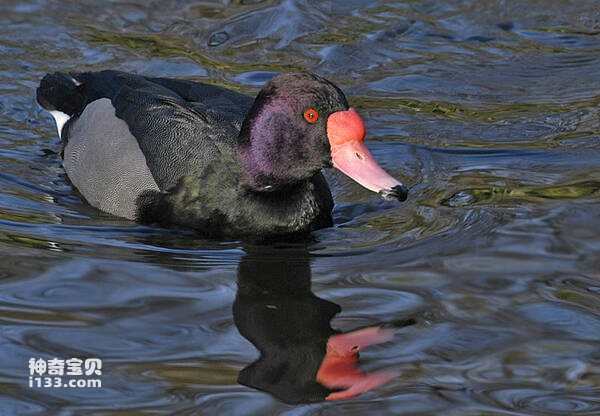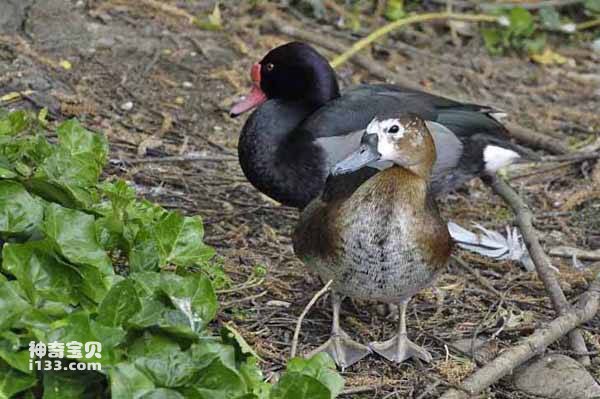Rosy-billed Pochard
IUCN
LCBasic Information
Scientific classification
- name:Rosy-billed Pochard
- Scientific Name:Rosy-billed Pochard,Netta peposaca
- Outline:Waterfowl
- Family:
Vital signs
- length:No textual research information is available
- Weight:No textual research information is available
- lifetime:No textual research information is available
Feature
The male duck has a beautiful red shield at the base of the bill. Size and color vary with the breeding season
Distribution and Habitat
It is found in South America, including Colombia, Venezuela, Guyana, Suriname, Ecuador, Peru, Bolivia, Paraguay, Brazil, Chile, Argentina, Uruguay, and the Malvinas Islands (also known as the Falkland Islands).
Pink-beak dives migrate in some areas, inhabiting open freshwater lakes, slow rivers, rivers and estuaries, and often appearing in blisters on both sides of highways, especially in freshwater lakes with waterside plants and deeper water. Occasional activity is also seen in fishing areas with high human activity.
Appearance
The male duck has a beautiful red shield located at the base of the duck's beak. Size and color vary with the breeding season. The male duck has a purple head, black neck, black chest and back, fine black and white lines on the belly and sides, and yellow to orange legs and feet. Female ducks are almost always brown with dark coverts. The bill is blue, the legs and feet are orange-yellow gray.
Details
The pink-billed Pochard (Netta peposaca) is a bird of the Anseriformes family Rose-billed Pochard.

Pink-billed ducks are slow and not afraid of people. Not good at tweeting, often in pairs or small groups of activity, sometimes also integrated hundreds of large groups. When resting, many groups stop in the beach and the island in the middle of the lake with water grass, and the flight is cumbersome and slow.

The breeding period of the pink-billed duck is April to June. Pairs are usually formed at the wintering ground, and nest building begins when they arrive at the breeding ground in mid-April. They usually nest on the island in the middle of the lake where there are many reeds and rushes, in the grass and dry reeds at the edge of the water, and sometimes in the dry reeds at the lake. The nest is usually well hidden. The nest is made of reed leaves and trichosis, and is padded with soft, fine grass and feathers. Each clutch lays 10-14 eggs, the eggs are light gray, the incubation period is about 27 days, mainly by the female birds incubated eggs, but when the female birds leave the nest to feed, the male birds also undertake the task of incubating eggs, and the chicks can be hatched in early June.
Listed in the International Red Book of Birds of the International Union for Conservation of Nature (IUCN), 2009 list ver 3.1.
Protect wild animals and eliminate wild meat.
Maintaining ecological balance is everyone's responsibility!








